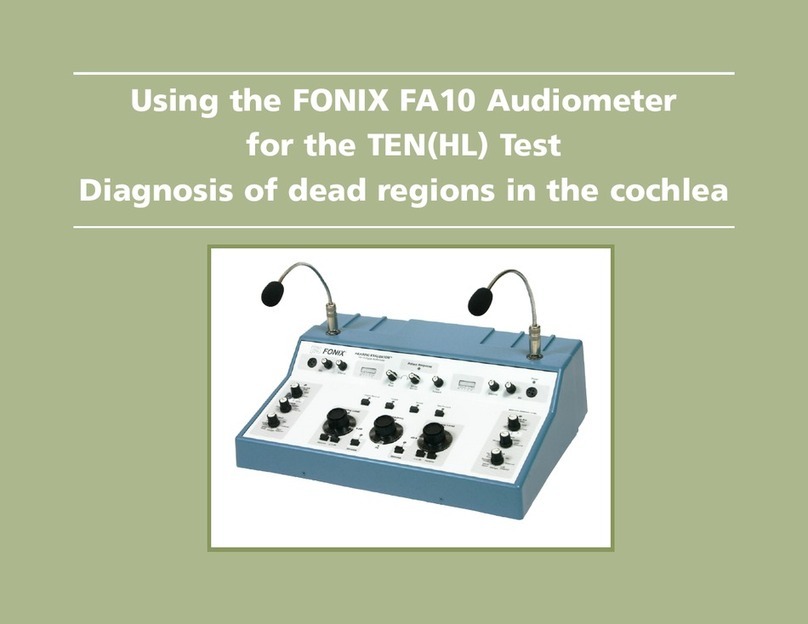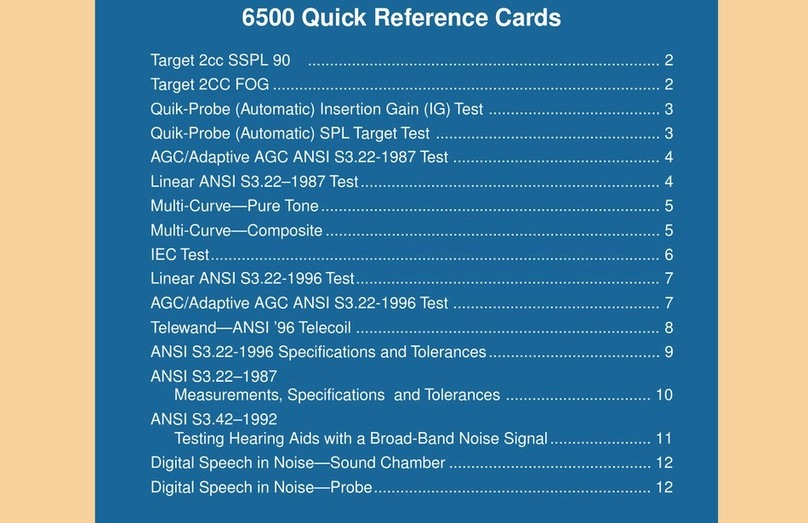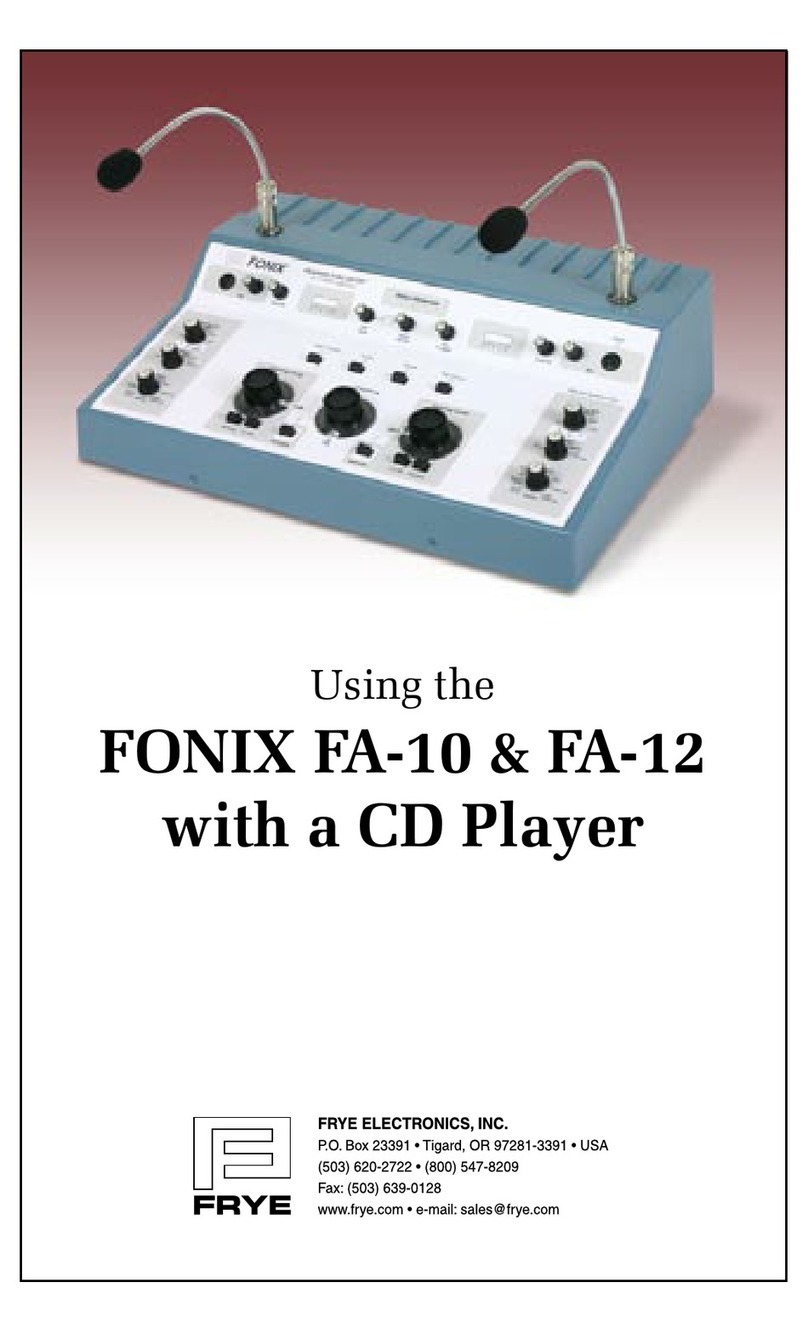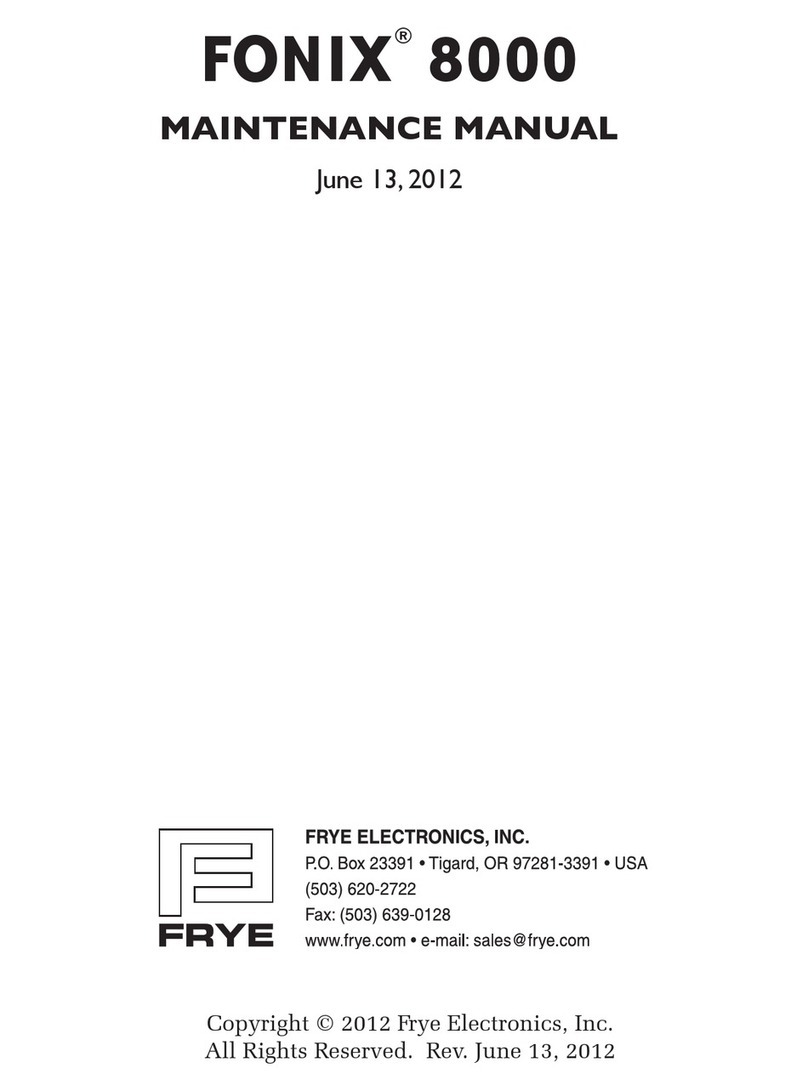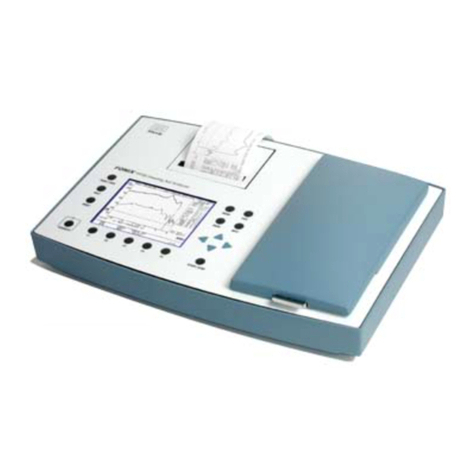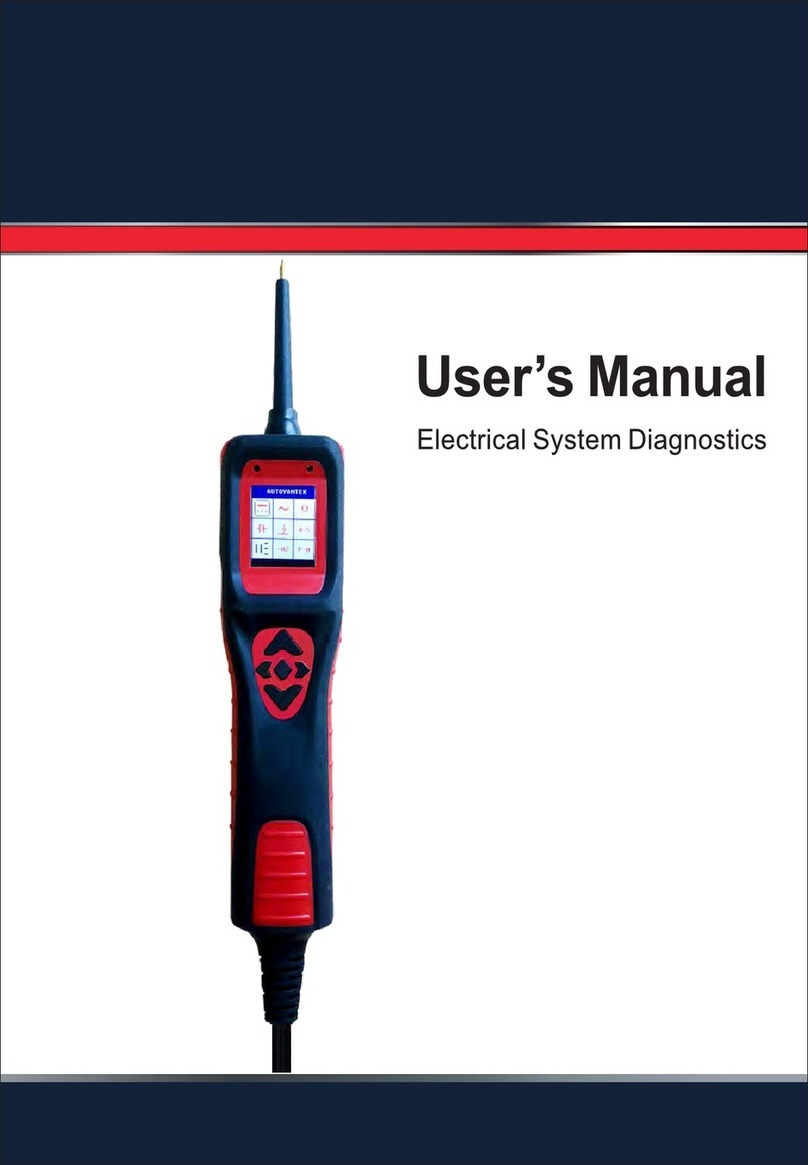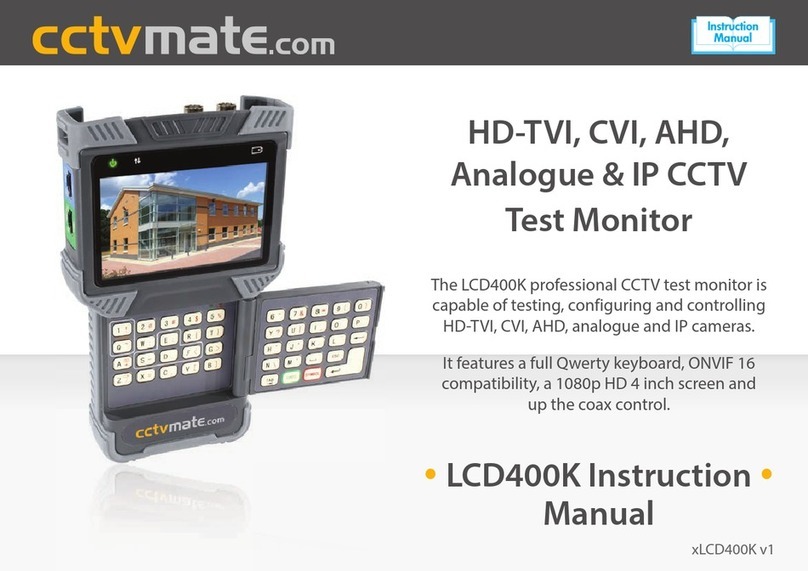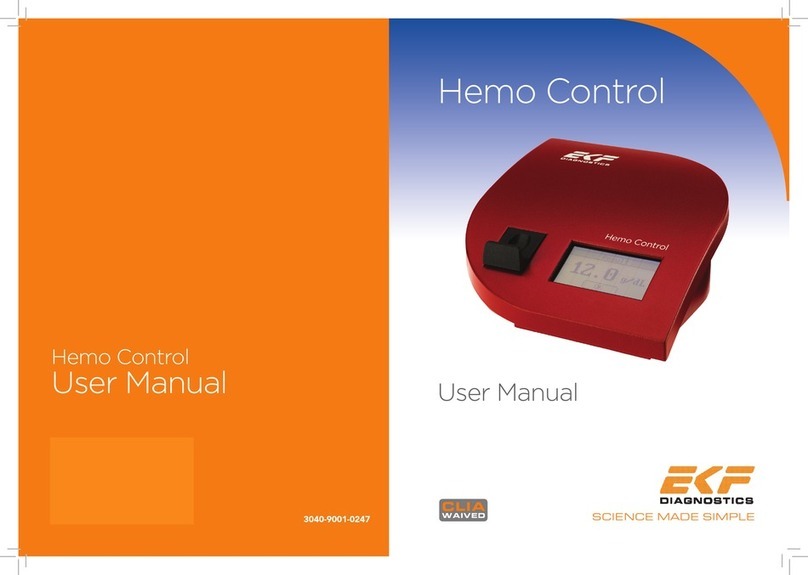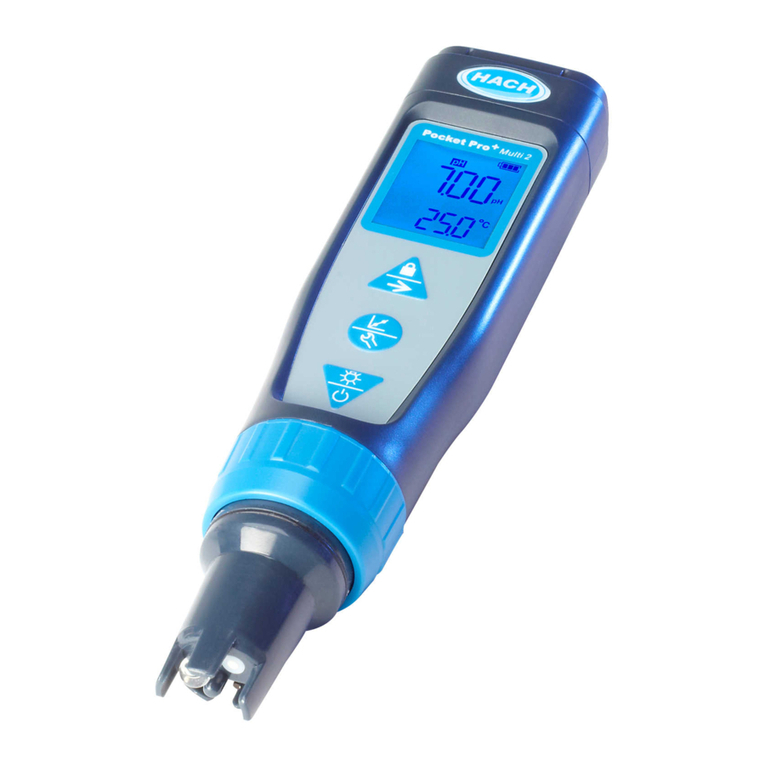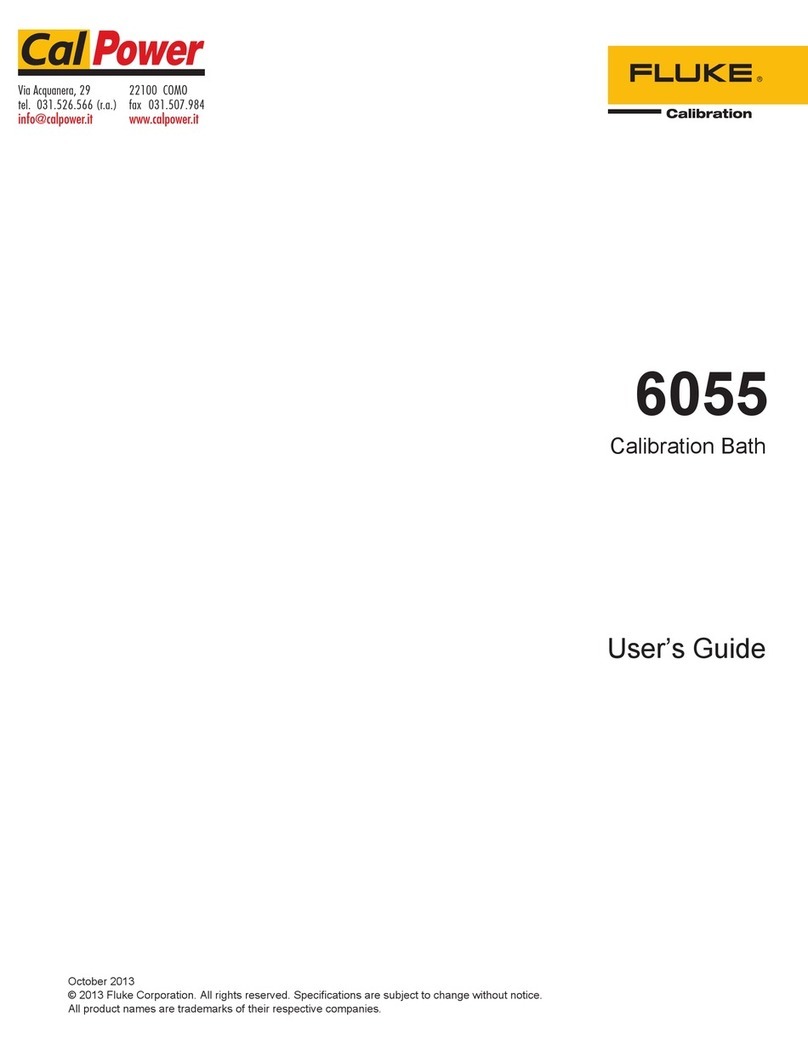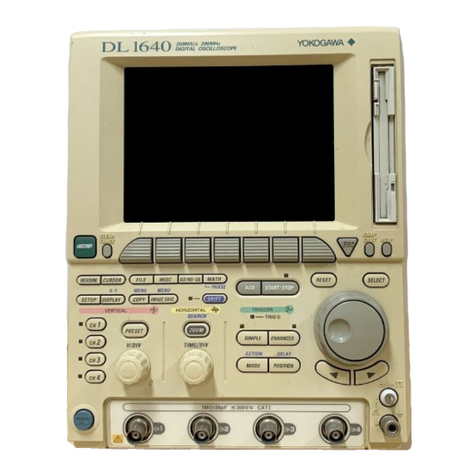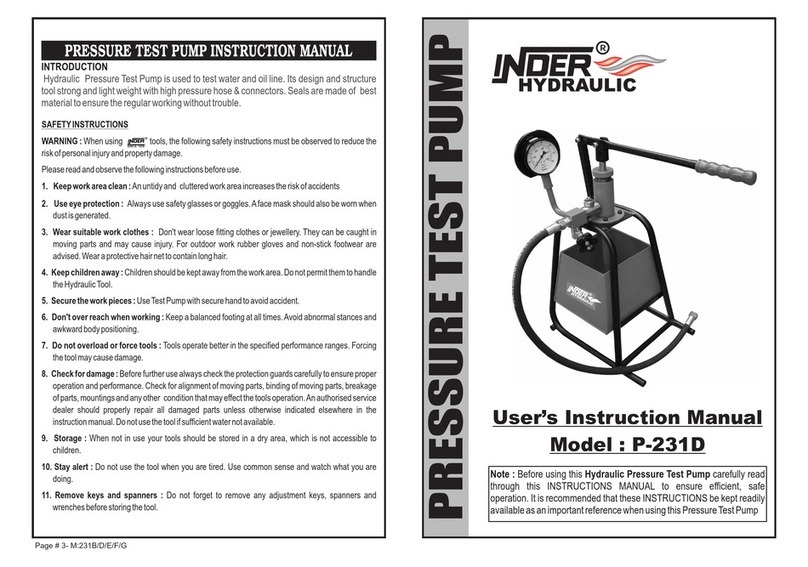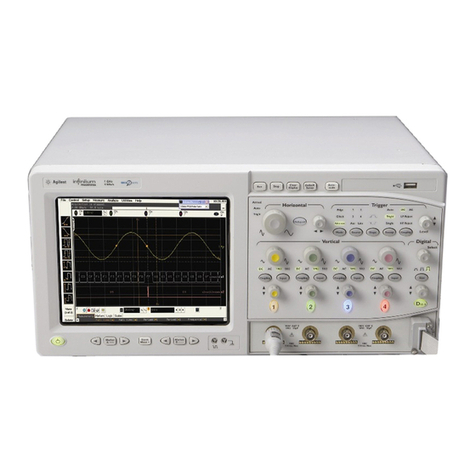Frye FONIX 7000 User manual

Maintenance Manual
©2010, Frye Electronics, Inc.
All rights reserved March, 2010
FONIX®7000
Rev. 9—March 31, 2010


Contents
1. Overview...........................................................................................1
1.1 Signal Generation Overview ........................................................................1
1.1.1 Digital Basis ...................................................................................1
1.1.2 Component Amplitude Weighting Considerations ............................................2
1.1.3 Phase of the Components .....................................................................2
1.1.4 Special Distortion Measurements .............................................................3
1.2 Signal Detection Overview..........................................................................3
1.2.1 Fast Fourier Technique ........................................................................3
1.2.1.1 Windowing ............................................................................3
1.2.1.2 Aliasing ................................................................................3
1.2.1.3 Noise Reduction .......................................................................4
2. Specifications . . . . . . . . . . . . . . . . . . . . . . . . . . . . . . . . . . . . . . . . . . . . . . . . . . . . . . . . . . . . . . . . . . . . . . . . . . . . . . . . . . . . . 5
2.1 Acoustical Outputs..................................................................................5
2.2 Telecoil Outputs ....................................................................................5
2.3 Battery Current......................................................................................5
2.4 Digital Readout of Sound Pressure Level............................................................6
2.5 Harmonic Distortion Analyzer ......................................................................6
2.6 Attack/Release......................................................................................6
2.7 Available Tests ......................................................................................6
2.8 Power ...............................................................................................7
2.9 Electronics Module .................................................................................7
2.10 Printer, Internal ....................................................................................7
2.11 Printer, External . . . . . . . . . . . . . . . . . . . . . . . . . . . . . . . . . . . . . . . . . . . . . . . . . . . . . . . . . . . . . . . . . . . . . . . . . . . . . . . . . . . . 7
2.12 Test Chamber ......................................................................................7
2.13 Monitor Headset...................................................................................8
2.14 Guarantee .........................................................................................8
3.0 Specification Test Procedure ..................................................................9
3.1 Source Frequency Accuracy.........................................................................9
3.2 Digital Measurement and Readout of SPL Accuracy ................................................9
3.3 Source Attenuator Accuracy ........................................................................9
3.4 Source Output Amplitude Accuracy................................................................10
3.5 Telecoil Drive Current Accuracy ....................................................................10
3.6 Battery Simulator Voltage Accuracy ................................................................11
4.0 Circuit Description .............................................................................13
4.1 CPU Board (061-0160-XX) ..........................................................................15
4.1.1 CPU Board CPU Section: ......................................................................16
4.1.1.1 CPU Clock: ............................................................................16
4.1.1.2 CPU Supervisor:.......................................................................16
4.1.1.3 CPU Chip: .............................................................................16
4.1.1.4 CPU Buss: .............................................................................16
4.1.1.5 CPLD: .................................................................................17

4.1.1.6 Flash ROM: . . . . . . . . . . . . . . . . . . . . . . . . . . . . . . . . . . . . . . . . . . . . . . . . . . . . . . . . . . . . . . . . . . . . . . . . . . . 17
4.1.1.7 RAM: .................................................................................17
4.1.1.8 BDM Interface: ........................................................................17
4.1.1.9 Silicon Serial Number: ................................................................17
4.1.2 CPU Board VGA Display Interface:............................................................17
4.1.2.1 Display Clock: ........................................................................17
4.1.2.2 Display Controller: ...................................................................18
4.1.2.3 DRAM: ................................................................................18
4.1.2.4 CPLD: .................................................................................18
4.1.2.5 Analog Display Interface: .............................................................18
4.1.2.6 Plug and Play Interface: ..............................................................18
4.1.3 CPU Board Front Panel and PS2 Keyboard Interfaces: ........................................18
4.1.3.1 Front Panel Keyboard Interface: ......................................................18
4.1.3.2 PS2 Keyboard Interface: ..............................................................19
4.1.4 CPU Board Top Buss Interface: ...............................................................19
4.1.4.1 CPLD: .................................................................................19
4.1.4.2 8MHZ Clock: ..........................................................................19
4.1.5 CPU Board RS232 Ports: ......................................................................19
4.1.5.1 Port0: .................................................................................19
4.1.5.2 Port1: .................................................................................19
4.1.6 CPU Board Miscellaneous Circuits: ...........................................................19
4.1.6.1 I2C Buss: ..............................................................................20
4.1.6.2 EEROM: ..............................................................................20
4.1.6.3 Real Time Clock: .....................................................................20
4.1.6.4 JTAG Port: .............................................................................20
4.1.6.5 Bottom Buss Serial Interface: .........................................................20
4.1.6.6 Other Circuits: ........................................................................20
4.2 Signal Generator Board (061-1025-XX) .............................................................21
4.2.1 Counters: ....................................................................................21
4.2.2 Logic .........................................................................................21
4.2.3 RAM .........................................................................................22
4.2.4 Logic Used by the Digitizer Board ...........................................................23
4.2.5 Digital to Analog Converter ..................................................................24
4.2.6 Low Pass Filter ...............................................................................24
4.3 Digitizer Board (060-2023-XX) .....................................................................24
4.3.1 Digitizer Board Bus Interfaces & Counter Section: ............................................25
4.3.1.1 Counters and Control Logic: . . . . . . . . . . . . . . . . . . . . . . . . . . . . . . . . . . . . . . . . . . . . . . . . . . . . . . . . . . 25
4.3.1.2 Logic: .................................................................................26
4.3.2 Digitizer Board Track/Hold & A/D Section: ...................................................26
4.3.2.1 Signal Switch/Sample and Hold: ......................................................26
4.3.2.2 Analog to Digital Converter: ..........................................................27
4.3.3 Digitizer Board RAM & In Port Section: .......................................................27
4.3.4 Digitizer Board Out Port & Prescaler Section:.................................................27
4.3.4.1 Preamplifier: .........................................................................27
4.3.4.2 Prescaling Amplifier: .................................................................27
4.3.5 Digitizer Board Speech & Alias Filter Section: ................................................27
4.3.5.1 Low Pass Filter: .......................................................................28
4.3.5.2 6 dB/Octave Compensation Amp: ....................................................28
4.3.6 Digitizer Board Battery Simulator Section: ...................................................28

4.3.6.1 Battery Current Measurement: .......................................................28
4.4 Digitizer Connector Board (061-0165-XX) ..........................................................28
4.5 Printer Controller Board (061-0161-XX).............................................................29
4.5.1 Printer Mechanism: ..........................................................................29
4.5.2 CPU Section: .................................................................................29
4.5.2.1 CPU Clock: ...........................................................................29
4.5.2.2 CPU Supervisor: ......................................................................30
4.5.2.3 Microcontroller: . . . . . . . . . . . . . . . . . . . . . . . . . . . . . . . . . . . . . . . . . . . . . . . . . . . . . . . . . . . . . . . . . . . . . . 30
4.5.2.4 CPU Buss: .............................................................................30
4.5.2.5 SRAM: ................................................................................30
4.5.2.6 Internal Flash ROM: ..................................................................30
4.5.2.7 External Flash ROM: ..................................................................31
4.5.3 Top Buss Interface Section: ..................................................................31
4.5.4 Internal Printer Interface Section: ...........................................................31
4.5.4.1 Head Interface: .......................................................................31
4.5.4.2 Stepper Motor Drive: .................................................................31
4.5.4.3 Printer Sensor Interface: .............................................................32
4.5.5 External Printer Interface Section: ...........................................................32
4.5.6 Miscellaneous Section:.......................................................................32
4.5.6.1 Beeper: ...............................................................................32
4.5.6.2 JTAG Interface: .......................................................................32
4.5.6.3 RS232 Interface: ......................................................................32
4.5.6.4: Power Supplies: .....................................................................32
4.6 Power Supply Board (061-0162-XX) ................................................................33
4.6.1 Power Supply Regulator Section:.............................................................33
4.6.1.1 Source Attenuator Circuit Power: .....................................................33
4.6.1.2 CPU and Printer Controller Board Power: .............................................33
4.6.1.3 Signal, Digitizer and Probe Interface Board Power: ...................................33
4.6.1.4 Power LED: ...........................................................................33
4.6.2 Power Supply Attenuator and Speaker Drive Section:........................................33
4.6.2.1 Shift Register: ........................................................................34
4.6.2.2 Source Attenuator: ...................................................................34
4.6.2.3 Speaker/Earphone Amplifier: ........................................................34
4.6.3 Power Supply Speaker Selection Section:....................................................34
4.6.3.1 Speaker Relays: ......................................................................34
4.6.3.2 Battery Simulator: ....................................................................34
4.7 Keyboard (061-0166-XX) ...........................................................................34
4.8 7020 Sound Chamber ..............................................................................35
4.8.1 Battery Simulator Board (061-0167-XX): ......................................................35
4.8.2 Sound Chamber Board (061-0084-XX):.......................................................36
4.9 7000 Probe Option ................................................................................36
4.9.1 Probe Interface Board (061-1089-XX).........................................................37
4.9.1.1 Probe Interface Board Connectors:....................................................37
4.9.1.2 Interface Board CPU Addresses: ......................................................38
4.9.2 Probe Keyboard (061-0163-XX) ..............................................................39
4.9.3 Probe Connector Board (061-0164-XX) .......................................................40
4.9.4 Preamp Board (061-0088-XX) ................................................................41
4.9.4.1 Ref Mic Preamp: ......................................................................41

4.9.4.2 Probe Preamp: ........................................................................41
4.9.4.3 Mic Power: ...........................................................................41
4.9.4.4 Multiplexer: ..........................................................................41
4.9.4.5 Mecca: ...............................................................................41
4.9.4.6 Line Driver: ...........................................................................41
4.9.4.7 Power Supplies: ......................................................................42
4.9.4.8 Headphone Amplifier: ...............................................................42
4.9.4.9 Microphones: ........................................................................42
4.9.5 EQ Board.....................................................................................42
5. Calibration .......................................................................................43
5.1 Microphones.......................................................................................43
6. Service and Repair ..............................................................................47
6.1 Fuse Replacement .................................................................................47
6.1.1 Line Fuse Replacement.......................................................................47
6.1.2 Power Supply Board Fuse Replacement ......................................................47
6.2 Electronics Module ................................................................................47
6.2.1 Removal and Replacement of the Wraparound ..............................................47
6.2.2 Removal and Replacement of Circuit Boards.................................................48
6.2.2.1 Removal and Installation of Plug-in variety: ..........................................48
6.2.2.2 Removal and Installation of Plug-in variety with rear connector plate: ...............48
6.2.3 Replacement of Bezel ........................................................................49
6.2.4 Replacement of Keyboard....................................................................49
6.2.4.1 Removal of Keyboard with removing bezel. ..........................................49
6.2.4.2 Removal of Keyboard without removing bezel. ......................................49
6.2.5 Replacement of Switched Power Entry Module ..............................................50
6.2.6 Replacement of Printer.......................................................................50
6.2.7 Replacement of Switching Power Supply.....................................................50
7. Maintenance .....................................................................................53
8 Safety Information ..............................................................................55
8.1 Rear Panel Safety Markings ........................................................................55
8.2 Safety Classification for IEC 60601-1 ...............................................................56
8.3 Connection of peripheral equipment to the 7000..................................................56
8.4 Electromagnetic compatibility .....................................................................56
8.5 Disposal of the 7000 and accessories ..............................................................57
9. Electromagnetic Compatibility ................................................................59
10. Schematics ......................................................................................65

1
1. Overview
The 7000, in composite mode of operation, produces a complete set of tones from
200 to 8000 Hz simultaneously, and is able to analyze the response of the hearing
aid to this complex signal, and displays 79 components from 200 to 8000Hz simul-
taneously on a graphical display. The 7000 can also operate in Sine Frequency, Sine
Sweep Frequency and Average Option Frequency analysis mode. The frequencies
used are from 200 to 8000 Hz in 100 Hz increments. Average Option Frequency
(sine mode only) has users choice among 6 sets of 3 frequencies.
The composite technique has the immediate advantage that the response curve
for the hearing aid can be viewed in “real time”, and for the first time the effects
of altering the setting of a control can be viewed while it is being done. Another
advantage of this technique is the capability of measuring the “real” response of an
AGC hearing aid, instead of the artificially flattened one obtained with pure tone
testing.
Analysis of the hearing aid output is done by first taking 256 samples of the signal.
These samples are taken in exact synchronism with the signal generator.
These 256 samples are then passed through a mathematical process called the Fast
Fourier Transform, which takes the timed samples and converts them into 128 fre-
quency components. 79 of these components are then displayed on the CRT screen
in the form of a graph.
A hard copy of the screen image is available through the use of the built-in thermal
printer or external printer
1.1 Signal Generation Overview
1.1.1 Digital Basis
The complex signal is generated by reading 256 12-bit data words in RAM sequen-
tially and doing it over and over again. The program is able to adjust the individual
amplitude of each signal component in the series so that it provides a correct
amplitude of drive at the test point in the chamber for each test frequency. The test
microphone is placed at the reference point in the chamber. Pushing the LEVEL
button starts the amplitude correction process. A composite analysis of the chamber
is done and correction factors are calculated which alter all of the individual drive
components so that the chamber response is flat and at the desired amplitude at
this reference point.
Chapter 1: Overview

2 FONIX 7000 Maintenance Manual
One way to think of the test waveform is to picture one sine wave of 100 Hz being
built using 256 points or steps through the sequential reading of a 12-bit digital
RAM. If we wanted to create a signal with two equal value components, we would
arithmetically add to this wave a second sinewave, say of 400 Hz. Each cycle of the
400 Hz wave would take exactly one fourth as many steps as the 100 Hz wave to
produce, or 64 steps. When these two sets of steps are added together we would get
a composite wave with two frequency components.
1.1.2 Component Amplitude Weighting Considerations
The amplitude of each frequency may also be dependent upon its placement in the
frequency spectrum. If a white noise equivalent is to be used, then every multiple
of 100 Hz will be used and will have equal value amplitude. If a speech spectrum
is to be approximated, the amplitudes of the components in the spectrum will drop
at a rate of 6 dB per octave above 900 Hz when viewed on a standard heterodyne
or Fast Fourier analyzer. This sloped correction is produced by using analog filters,
since we would very quickly run out of digital resolution while covering the 3
octaves between 900 and 7200 Hz. 18 dB equals a ratio of about 8 to 1.
After the signal is received from the hearing aid and passed through the preamplifi-
er, it is run through a high frequency emphasis amplifier to restore the 6 dB/octave
loss so that we can get a compensated gain response picture.
The RMS amplitude of the drive signal increases in proportion to the square root of
the sum of the squares of all of its components. Thus, if a particular RMS value of
drive signal is needed, both the number and the individual amplitudes of all of the
components must be taken into account. A multiple frequency signal will then have
smaller component amplitudes to produce the same RMS drive to the device under
test as that of a sine wave signal drive which has only one frequency component.
1.1.3 Phase of the Components
Another interesting problem encountered is that the individual components of the
wave cannot be allowed to line up in phase, or the composite signal will consist of
a series of spikes with very little in between, or an impulse drive. The disadvantage
with this type of drive is that it makes very heavy demands on the dynamic range
of the hearing aid under test. Hearing aids are not known for their large dynamic
ranges, so this type of waveform must be avoided. To produce a moderate crest fac-
tor noise equivalent, it is necessary to skew the phases of all of the components so
that a given RMS amplitude of signal has a low peak value. A computer program
was used to determine the optimum set of phase values.

3
1.1.4 Special Distortion Measurements
Harmonic distortion tests can be run by generating a signal consisting of only one
sine component at a time, and using the Fast Fourier analysis program to determine
the spectral distribution of harmonics.
Intermodulation tests are automatically run using the composite waveform. If pres-
ent, this type of distortion is immediately apparent when viewing the gain or power
response of the hearing aid.
1.2 Signal Detection Overview
1.2.1 Fast Fourier Technique
The assumed technique for making response measurements is the Fast Fourier
Transform. This technique is ideally suited to a system that is used to analyze a
digitally generated waveform, since the sampling process can be locked to the sig-
nal generation process, thus eliminating one of the main problems with the FFT,
the windowing of the measured waveform. A rectangular window is thus possible
and used. That is, all sampled components are used as measured.
1.2.1.1 Windowing
The FFT requires that the signal being sampled is exactly repetitive in order
to achieve a clean spectral display. If there is an abrupt discontinuity between
the first and last samples taken, the transform can only assume that large high
frequency components are present in order to generate the discontinuity. Use
of the internally generated signal helps to eliminate this problem; if a random
noise is present in the signal being measured, it will appear in the response
display.
When the sound drive is switched to “OFF” the 7000 is turned into a general
purpose spectrum analyzer and can be used for analysis of signals. When this
is done, mathematical windowing is used as is done with standard FFT analyz-
ers. This windowing is done by multiplying the first and last samples taken
by a value close to zero. The next two samples in from the ends are multiplied
by a larger quantity. In the center of the group of samples, the values are mul-
tiplied by a compensating factor greater than unity. The windowing function
used is called a Hanning function.
1.2.1.2 Aliasing
A further requirement is that the bandwidth of the measured signal be con-
trolled so that its frequency does not exceed a value of 1/2 the sampling rate.
Chapter 1: Overview

4 FONIX 7000 Maintenance Manual
The usual way to do this is with a multiple stage “brick wall filter”. A conser-
vative design will not use a bandwidth equivalent to the limit stated above. It
will instead stop the analysis well before the limit is reached. In the present
system, therefore, the upper frequency limit is set at 8000 Hz, even though the
theoretical limit is 12800 Hz.
Aliasing shows up as a generation of random or non-random dot patterns in
the sampled data points, and occurs when the signal can take a number of
excursions between samples. This aliasing in an FFT will produce a number
of components in the low frequency portion of the spectrum that are really not
there. It is also desirable to eliminate the high frequency components from the
signal generator portion of the system. A brick wall filter is used there also.
1.2.1.3 Noise Reduction
The effects of ambient or hearing aid noise can be reduced by the use of signal
averaging because the sampling process is exactly synchronized with the sig-
nal generator.
Noise reduction averaging is done in steps of 2, 4, 8, and 16. The process is
done by use of an averaging buffer. The data is added to the data already in the
buffer used to create the last spectral display in a ratio of 1/2, 1/4, etc., depend-
ing on the averaging called for. The result of the addition is then divided to
get a properly scaled number. The effect of the non-synchronous noise is thus
reduced because of the averaging process.
Averaging does not slow down the display process, but does slow down
the effect that an acoustical change will cause on the displayed waveform.
Changes in the phase of signals will also show up if averaging is being used.
The change of phase is accomplished by movement of the hearing aid in a
sound field while the measurement is in process. The effect of phase changes
is a dropout of the signal and an eventual recovery to the correct level when
the motion has ceased.

5
2. Specifications
2.1 ACOUSTICAL OUTPUTS
Frequencies: 200-8000 Hz in 100 Hz intervals (user interface)
200-8000 Hz in 50 Hz intervals (RS232)
Frequency Accuracy: 1%
Amplitudes: 40-100 dB in 5 dB intervals coupler, 40-90 dB in 5 dB
intervals real-ear (user interface)
40-100 dB in 0.01 dB intervals coupler, 40-90 dB in
0.01 dB intervals real-ear (RS232)
Accuracy Coupler: ±1 dB from 300 to 5000 Hz, all others ±3 dB
(after leveling)
Real-ear: ±3 dB, 200-8000 Hz (after leveling)
Distortion (at 70 dB SPL): Puretone: < 0.5%, 400-2500 Hz
2.2 TELECOIL OUTPUTS
Field Strength: 1, 1.78, 3.16, 5.62, 10, 17.8, 31.6, 56.2, 100 mA/m (user
interface)
0-180 mA/m in 0.01 mA/m specified intervals (RS232)
Accuracy: Accuracy: ±2 dB
2.3 BATTERY CURRENT
Readout Range: 0.00-25.00 mA
Available Current: greater than 50 milliamps
Accuracy: ± 5% of reading ± one digit
Zero adjust: Automatic (Remove battery pill then press 7000 LEVEL
button.)
Chapter 2: Specifications

6 FONIX 7000 Maintenance Manual
Resolution: 0.01 mA
Voltages supplied: 1.5 (silver), 1.3 (zinc air)
Voltage Accuracy: ±15 millivolts.
Resistance accuracy: (± 6% ± 0.5 ohm)
2.4 DIGITAL READOUT OF SOUND PRESSURE LEVEL
Frequency Range: 200-8000 Hz
Amplitude Range: 0-150 dB SPL
Resolution: 0.1 dB
Accuracy: Coupler mic: ±1.0 dB ±1 digit, 300-5000 Hz, ±2 dB ± 1
digit all other frequencies
Probe mic: ± 2.5 dB ± 1 digit, 250-8000 Hz (probe mic)
Ref mic: ± 3 dB ± 1 digit, 100-8000 Hz (ref mic)
2.5 HARMONIC DISTORTION ANALYZER
Type: 2nd, 3rd, Total (2nd plus 3rd)
Resolution: 0.1%
2.6 ATTACK/RELEASE
Range: 1.25 to 5000 mSec.
Accuracy: Accuracy: ±10 % or ± 2 ms, whichever is larger
Signals: Puretone: 200-8000 Hz, in 100 Hz intervals (user inter-
face), 50 Hz intervals (RS232), Composite
2.7 AVAILABLE TESTS
Automated Test Sequences: ANSI S3.22-1987, ANSI S3.22-1996, ANSI S3.22-2003,
IEC 60118-7:1994, IEC 60118-7:2005, ANSI S3.42-1992,
JIS:2000

7
Additional Coupler Tests: Enhanced DSP, Input/Output, Attack & Release, Battery
Current, Coupler Multicurve
Real-ear Test Screens: Audiogram Entry, Target Edit, Insertion Gain, Real-ear
SPL, Visible Speech
2.8 POWER
Source voltage: 100-240 volt AC.
Frequency Range: 50-60 Hz.
Power Requirement: 0.6 A.
Fuse: 0.63A / 250 V~, Type T, IEC 60127-2 Sheet III (Slo-Blo
Type, Glass, 5mm x 20mm). Qty 2.
2.9 ELECTRONICS MODULE
Size: 17.4"W x 6.5"H x 14.6"D (44.2 x 16.5 x 37.1 cm).
Weight: 17 lbs.(7.7 kg).
2.10 PRINTER, INTERNAL
Type: High speed line thermal printer
Paper width: 4.41" (112 mm)
2.11 PRINTER, EXTERNAL (PRINTER NOT PROVIDED)
Interface: Parallel
Language: HP PCL3 and ESC-P/2
2.12 TEST CHAMBER
Test Area: 7"x 7.5"x 1.5 deep (17.8 x 19.1 x 3.8cm).
Ambient Noise Isolation: 45 dB at 1 kHz (allows THD measurement to within 3% at
60 dB source level and a 60 dB ambient).
Chapter 2: Specifications

8 FONIX 7000 Maintenance Manual
Size: 13.5”W x 18"H x 11.5"D (34.3 x 45.7 x 29.2cm).
Weight: 36 lbs. (16.3 kg).
2.13 MONITOR HEADSET
Monitored channel: Probe microphone
Headphone type: Stereo or mono, using 2 or 3 conductor 1/4 inch
phone plug
Usable headphone impedance: 32 ohms to 600 ohms (intended for Walkman style
headphones)
2.14 GUARANTEE
The FONIX 7000 and its accessories are guaranteed to be free from manufacturing
defects which would prevent the products from meeting these specifications for a
period of one year from date of purchase.

9
3. Specification Test Procedure
3.1 SOURCE FREQUENCY ACCURACY
Instrument required: Frequency counter accurate to 0.1 percent and capable of mea-
suring 1000 Hz.
Setup: Enter the Coupler screen. From the menu, set static tone to single. Exit the
menu. Set the amplitude to 90dB and the frequency to 1000Hz. Connect the frequency
counter to the sound chamber connector, on the 7000, pin 2, ground to pin 3.
Measurement: The frequency counter should read 1000Hz within 1% plus the toler-
ance of the counter.
3.2 Digital Measurement and Readout of SPL Accuracy
Instrument required: Precision sound level meter with 1/2 inch condenser micro-
phone. Response set to flat frequency response (C weighted).
Setup: Enter the coupler screen. From the menu, set noise reduction(tone) to off and
static tone to single. Exit the menu. Set the 7000 amplitude to 90dB. Place the sound
level meter’s microphone at the reference point in the 7020 sound chamber. Place
the 7000 coupler microphone so that it’s grill is facing the sound level meter’s micro-
phone’s grill and is 1/8" away from it. Leave the chamber lid open and make sure the
room is very quiet.
Measurement: Starting at 200Hz, measure the RMS levels at the reference point with
both systems for each puretone frequency. They should agree within 1 dB +/- 1 digit,
from 300 to 5000 Hz and within 2 dB +/- 1 digit at all other frequencies, plus the tol-
erance of the sound level meter.
3.3 Source Attenuator Accuracy
Instrument required: Precision A.C. voltmeter that is accurate to 1KHz.
Setup: Enter the coupler screen. Level the 7000. From the menu, set noise
reduction(tone) to off and static tone to single. Exit the menu. Set the 7000 to 1KHz
and 100 dB. Connect the voltmeter to the sound chamber connector, on the 7000,
pin 2 ground to pin 3.
Chapter 3: Specification Test Procedure

10 FONIX 7000 Maintenance Manual
Measurements: Measure the voltage on the voltmeter. Reduce the output level in 5 dB
increments to 40 dB and note that the voltage changes in 5 dB steps +/- .5 dB plus
the tolerance of the voltmeter.
3.4 Source Output Amplitude Accuracy
Instrument Required: Precision sound level meter with ½ inch condenser micro-
phone, response set to flat frequency response.
Setup: Enter the Coupler Multicurve screen. In the menu, set noise reduction(tone)
to off and static tone to single. In the test screen, set the 7000 amplitude to 90dB.
Place the coupler microphone at the reference point in the 7020 sound chamber.
Close the chamber lid. Level the 7000. Replace the coupler microphone with sound
level meter’s microphone at the reference point in the 7020 sound chamber. Close the
chamber lid.
Measurement: Starting at 200Hz, measure the RMS levels, at the reference point,
with the sound level meter, for each puretone frequency. It should read 90 dBSPL
within 1 dB from 300 to 5000 Hz and within 3 dB at other frequencies, plus the toler-
ance of the sound level meter.
3.5 Telecoil Drive Current Accuracy
Instrument required: Precision A.C. current meter that is accurate to 1 kHz.
Setup: Enter the Coupler Multicurve screen. In the local menu, set static tone to
single and transducer to telecoil. Connect the current meter to the telecoil jack on
the sound chamber. In the test screen, adjust the amplitude of the telecoil amplitude.
The measured electrical output on the meter should correspond to the displayed
telecoil field strength within 2 dB plus the tolerance of the current meter in the fol-
lowing chart:

11
Electrical output Field Strength
0.044 mA 1 mA/meter
0.079 mA 1.78 mA/meter
0.140 mA 3.16 mA/meter
0.250 mA 5.62 mA/meter
0.444 mA 10 mA/meter
0.790 mA 17.8 mA/meter
1.404 mA 31.6 mA/meter
2.485 mA 56.2 mA/meter
4.44 mA 100 mA/meter
For example, if the telecoil amplitude is set to 10 mA/m, the meter should read .444
mA within tolerance.
3.6 Battery Simulator Voltage Accuracy
Instrument required: Precision D.C. voltmeter.
Setup: Connect the voltmeter to the battery pill jack in the 7020 sound chamber.
Make sure nothing else is connected to this jack.
Measurement: Set the battery type to any Silver position. Measure voltage and see
that it is 1.5V within 15 mV plus the tolerance of the voltmeter. Set the battery type
to any Zinc Air position. Measure the voltage and see that it is 1.3V within 15 mV
plus the tolerance of the voltmeter.
Chapter 3: Specification Test Procedure


13
4. Circuit Description
Logic Notation
Some logic circuit inputs and outputs operate with positive true logic. A “+” voltage
at such a point is equivalent to a “one.” Other inputs and outputs operate just the
opposite, with negative true logic. The circuit descriptions which follow label
negative true inputs and outputs by a “\.”
A high speed data bus is present at the top of many of the circuit boards used. The
bottom bus connector is used for analog signals, power, a clocked serial interface,
and few digital signals.
General Description
The following boards are used in the 7000:
a. CPU
b. Signal Generator
c. Digitizer
d. Digitizer Connector
e. Printer Controller
f. Power Supply
g. Keyboard
The following boards are used in the 7020 Sound Chamber:
a. Battery Simulator Board
b. Sound Chamber Board
If the Probe Option is ordered, the following boards are included:
The following board is located in the 7000:
Probe Interface Board.
The following boards are located in the Probe Module:
a. Probe Keyboard
b. Preamp Board
c. Probe Connector Board
d. EQ Board
Chapter 4: Circuit Description

14 FONIX 7000 Maintenance Manual
The CPU board contains a 68331 microprocessor. This board has 2 MB Flash ROM
and 1 MB SRAM. 16KB EEPROM, Video Controller, UART, Time-of-day clock, and
silicon serial number.
The SIGNAL GENERATOR BOARD contains the circuits for conversion of a 256
12-bit word map to an analog signal. The map is loaded to this board from the CPU
board. A 5 dB per step attenuator is also built onto the board and is controlled by
the CPU. The output signal is delivered to the lower bus for amplification by the
power amplifiers. A filter is also located on this board to remove the frequency
components above the 8 kHz top frequency.
The DIGITIZER BOARD is also controlled by the CPU. This board contains a CPU
controlled prescaler and a brick wall filter to prevent aliasing.
Digitizing is done by means of a 256 sample system and can be synchronized to the
signal generator, if desired. The sampling rate is 25.6 kHz, the same rate used by
the signal generator.
The 12-bit accurate sampled data is stored in RAM and can be read as desired by
the CPU. When performing attack and release measurements, the sampling is done
without synchronization with the signal generator.
This board also contains battery voltage generation and current measurement cir-
cuits. The amplitude of the current is changed to a voltage that is switched to and
measured by the 12-bit A to D converter.
The DIGITIZER CONNECTOR BOARD is an extension to the Digitizer and Probe
Boards. This board contains external connectors and controls associated with these
boards
The PRINTER BOARD drives the printer using a 16-bit microprocessor. This board
also contains 1 MB RAM, 128KB Flash Memory, a CPLD device and a stepper motor
driver.
A 640 x 416 dot screen image is mapped to the internal printer. Each dot is
replaced with a matrix of 2x2 pixels. The printed image is one set of 2 x 416 dots
per line, for 832 dots per line. Each line is printed twice to obtain the 2 x 2 matrix
for each dot.
The Printer Board provides connections to the internal printer for the thermal print-
er head, paper feed motor, paper sensor and head up detection.
An external parallel interface (25 pin D) is provided some HP and Epson compat-
ible external printers. HPCL5 and ESC/P2 languages are used.
Other manuals for FONIX 7000
1
Table of contents
Other Frye Test Equipment manuals
Popular Test Equipment manuals by other brands

Dwyer Instruments
Dwyer Instruments TDS Series Specifications - Operating Instructions
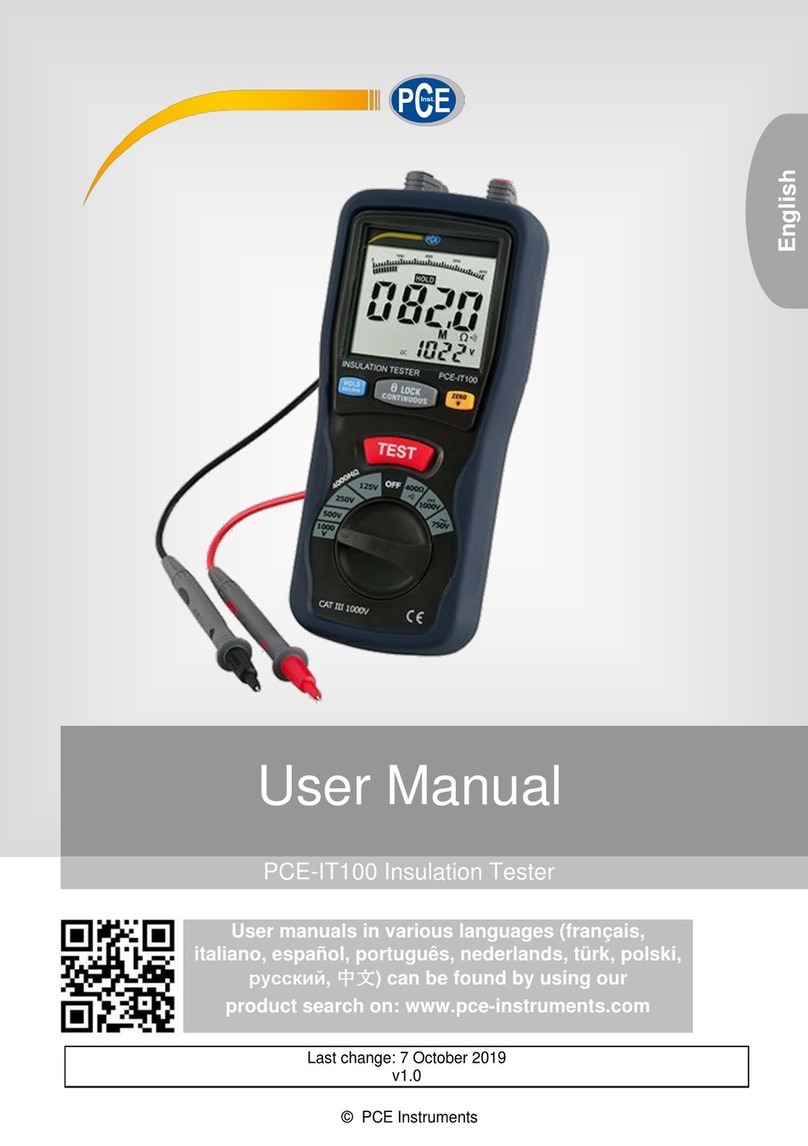
PCE Instruments
PCE Instruments PCE-IT100 user manual

Additel
Additel 927 Maintenance and Repair Manual
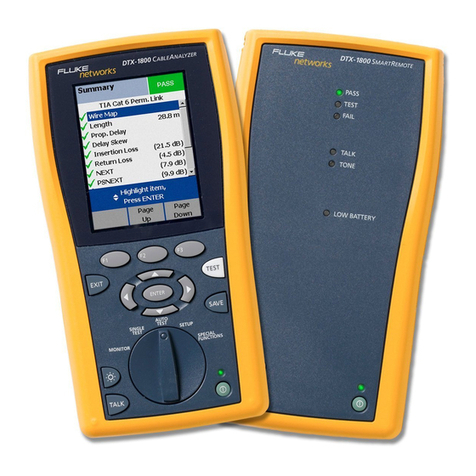
Fluke
Fluke DTX Series user manual
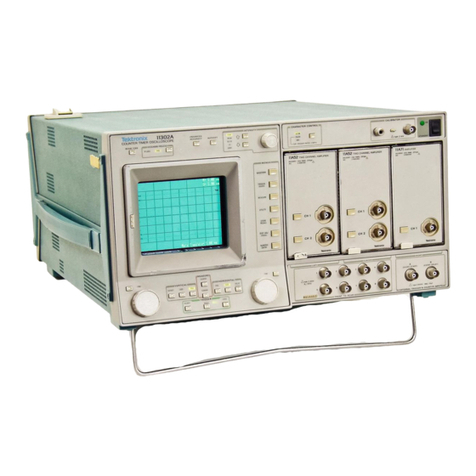
Tektronix
Tektronix 11302A Service reference manual

FTA
FTA ADwin-Gold User's reference manual
